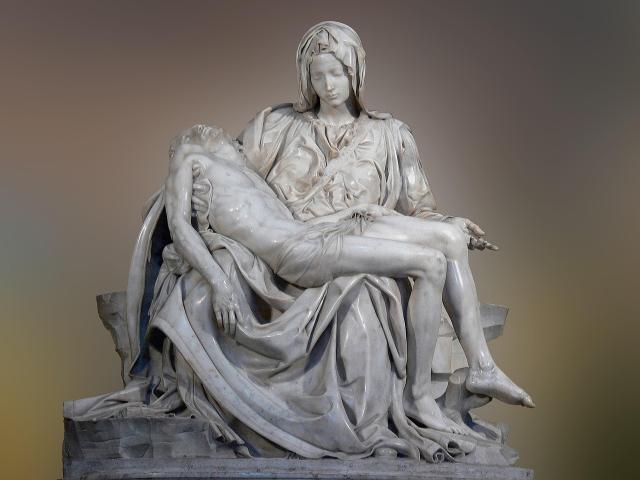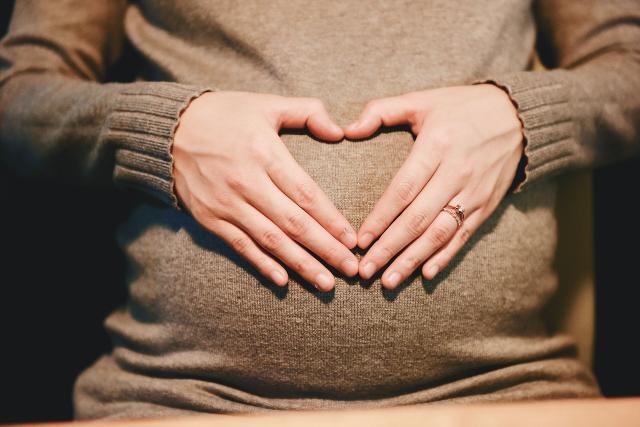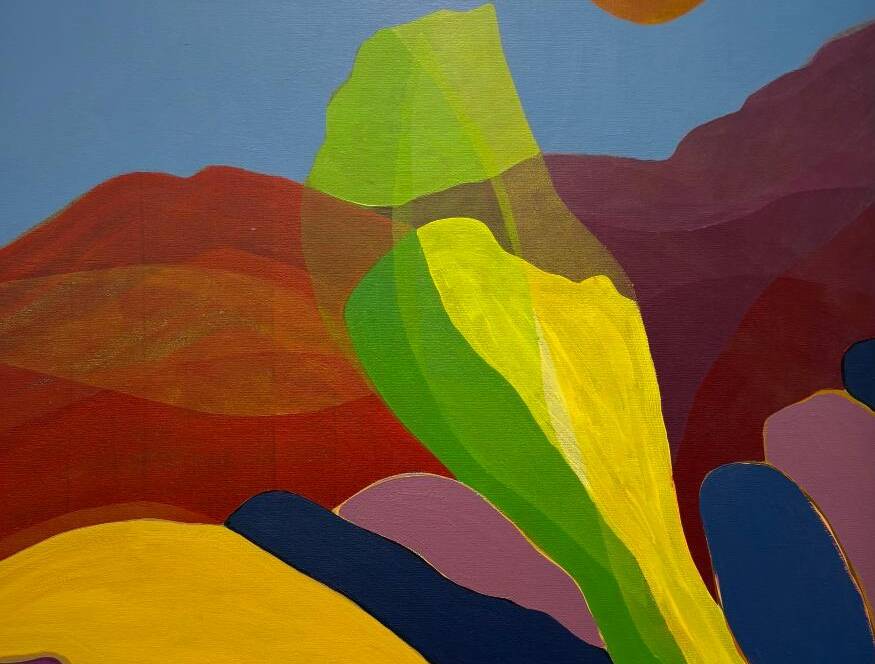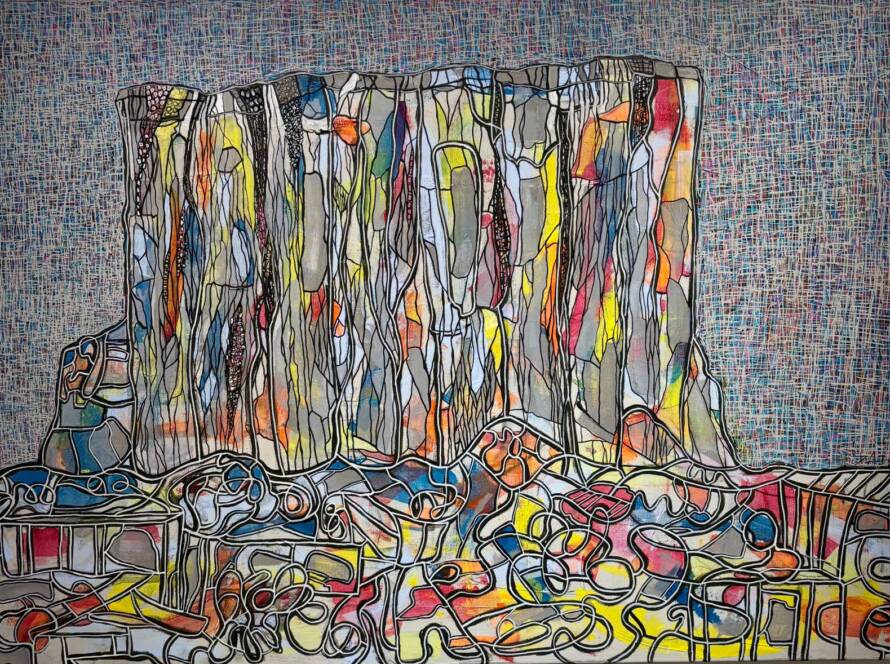An Article by J.A. (1286 words, 7 min read)
“The hand that rocks the cradle is the hand that rules the world.” — William Ross Wallace
Motherhood is one of the deepest and most universal human experiences. It is a story of love and sacrifice, of tenderness and resilience. Artists have long sought to capture its essence, from the quiet moments of devotion to the unbearable weight of loss.
On this Mother’s Day, we celebrate motherhood not just as a role but as a force—one that nurtures, protects, and shapes the world. Through sculptures, paintings, and cinema, we see the unbreakable bond between mother and child, a connection that transcends time, culture, and artistic style.
A Mother’s Grief: Michelangelo’s Pietà
Few works in art history depict the pain of a mother’s loss as powerfully as Michelangelo’s Pietà (1498–1499). Carved from cold marble, it radiates warmth and sorrow. The Virgin Mary cradles the lifeless body of Christ, her expression caught between anguish and acceptance.
There is something profoundly human about the way her hands hold him, as if still trying to protect him even in death. Michelangelo understood something essential about motherhood: the helplessness of watching a child suffer, the impossible task of letting go. Even in silence, even in stone, this sculpture speaks of a love that never dies.

The Quiet Strength of Whistler’s Mother
Some mothers are not depicted in moments of grief but in quiet, unshakable strength. James McNeill Whistler’s Arrangement in Grey and Black No. 1 (commonly known as Whistler’s Mother, 1871) is a striking example.
At first glance, she appears rigid, severe. But look closer: her hands rest gently in her lap, her gaze is distant, thoughtful. This is a mother who has lived, who has endured, who carries the weight of her family with unwavering resilience. She does not need to move to be powerful, her presence alone is enough.

The Everyday Beauty of The Cradle and The Caress
Some artists turned their focus to the tender, everyday moments that define motherhood.
• Berthe Morisot’s The Cradle (1872) captures a mother watching over her sleeping baby, her face full of quiet devotion. There is no grandeur here, no tragedy, just a mother lost in love.
• Mary Cassatt’s The Caress (1902) shows a mother and child in a gentle embrace, their faces pressed together. Cassatt, one of the few female Impressionists, painted mothers from a place of deep understanding, highlighting the physical closeness and emotional bond that never fades.
These paintings remind us that motherhood is not found in dramatic moments but in the smallest gestures: a hand on a forehead, a whispered lullaby, the steady rhythm of breath against a mother’s chest.


A Mother’s Love in Gold: Klimt’s Mother and Child
Gustav Klimt’s Mother and Child (part of The Three Ages of Woman, 1905) transforms motherhood into something almost sacred. The mother, wrapped in golden patterns, holds her child as if cradling the entire world. Her eyes are closed, lost in the moment, lost in love.
Klimt’s dreamlike style turns the everyday act of holding a child into something luminous, reminding us that even in exhaustion and chaos, motherhood is full of beauty.
Motherhood and Loss: Frida Kahlo’s Pain
Not all depictions of motherhood are joyful. Some are filled with grief, with the longing for a child that was never held.
Frida Kahlo, whose life was marked by pain, painted her own experiences of miscarriage and infertility with raw emotion. Works like Henry Ford Hospital (1932) lay bare the devastating reality of a mother without a child. Floating around her broken body are symbols of lost motherhood; a fetus, medical instruments, a snail symbolizing slow agony.
Kahlo’s paintings remind us that motherhood is not just about birth; it is about love in all its forms, including the love that remains even when a child is lost.

The Protective Mother: Louise Bourgeois’ La Mère
Motherhood is not just softness; it is also fierce protection. Louise Bourgeois’ La Mère (1999) takes the form of a massive spider, towering and watchful.
At first, it seems strange to connect a spider with motherhood, but to Bourgeois, this creature symbolized maternal strength, patience, and vigilance. A mother is not only gentle hands and lullabies; she is also the one who stands guard, who weaves an invisible web of safety, who would do anything to protect her children.

A Mother in Motion: Monet’s Woman with a Parasol
Claude Monet’s Woman with a Parasol (1875) captures a different side of motherhood—one of movement, joy, and life. His wife, Camille, walks with their son in a windswept field, her dress billowing, her parasol tilted.
This is not a mother frozen in time, but one in motion; alive, vibrant, caught in the golden light of an ordinary day. It reminds us that motherhood is not just about care; it is about presence, about sharing the world with your child, about laughter carried away by the wind.

Motherhood in Lebanese Art
Lebanese artists, too, have explored the beauty and weight of motherhood, often through the lens of struggle and resilience.
• Saliba Douaihy depicted traditional Lebanese mothers as the heart of the home, grounding their families with quiet power.

• Paul Guiragossian painted mothers with elongated figures, their bodies full of both grace and sorrow. His works speak of the strength of mothers, especially in times of hardship.

• Huguette Caland celebrated the maternal body in her abstract forms, turning motherhood into an exploration of femininity and intimacy.

A Mother’s Embrace in Jamil Molaeb’s Art
Lebanese artist Jamil Molaeb, with his bold colors and expressive forms, brings to life the essence of motherhood as both a personal and universal experience. In Mother Jerusalem, Urshalim, al-Quds, he transforms the sacred city into a nurturing maternal figure, embracing its people, history, and heritage. Much like a mother shielding her children, Molaeb’s Jerusalem is protective yet vulnerable, strong yet deeply tender. His art, rooted in Lebanese traditions, often places mothers at the heart of family and society, celebrating their resilience and quiet power. Through his dynamic compositions, he reminds us that motherhood is not just about care. Yet it is about holding together the past, present, and future with unwavering love.
These artists remind us that in Lebanon, as in the rest of the world, mothers are the foundation of everything.

Motherhood in Cinema: Stories That Move Us
Art is not just in paintings and sculptures, it is also in stories. Cinema has given us powerful depictions of motherhood that make us feel seen.

• In Alfonso Cuarón’s Roma (2018), we see the quiet strength of a mother figure who holds a family together through love alone.


• In Jane Campion’s The Piano (1993), motherhood is fierce and defiant, a force of nature.
• In Nadine Labaki’s Where Do We Go Now? (2011), Lebanese mothers become symbols of peace, trying to protect their children from a violent world.
These films remind us that motherhood is not just about raising a child—it is about shaping the world around them.
A Love That Never Fades
From the sorrow of Pietà to the golden embrace of Klimt, from the quiet strength of Whistler’s Mother to the raw pain of Frida Kahlo, artists have captured the essence of motherhood in all its complexity.
Yet no matter the style, no matter the era, the message remains the same:
A mother’s love is endless. It is sacrifice and softness, strength and sorrow, light and shadow. It is a hand that holds, a heart that carries, a presence that never fades.
On this Mother’s Day, we celebrate all mothers—the ones who are here, the ones who are gone, the ones who raised us, the ones we have become.



